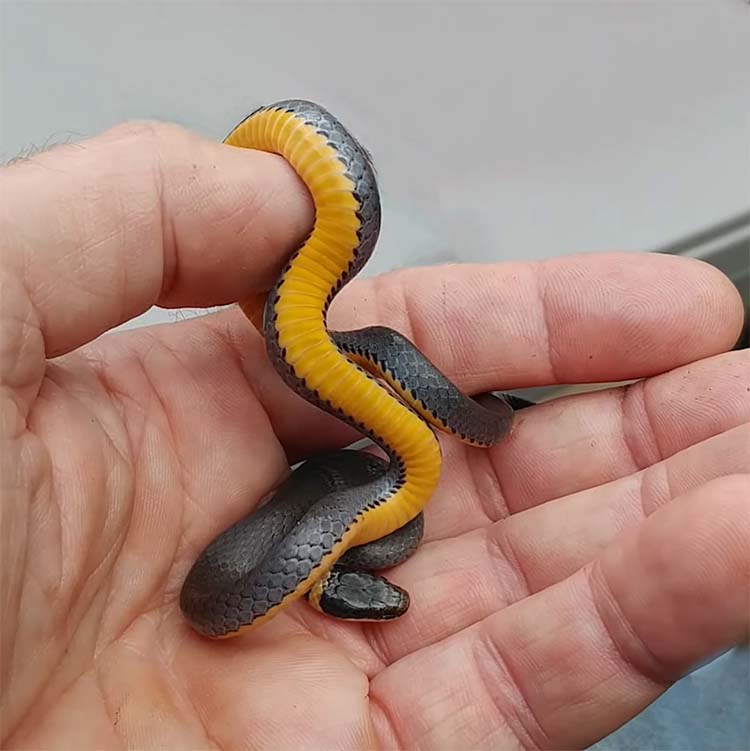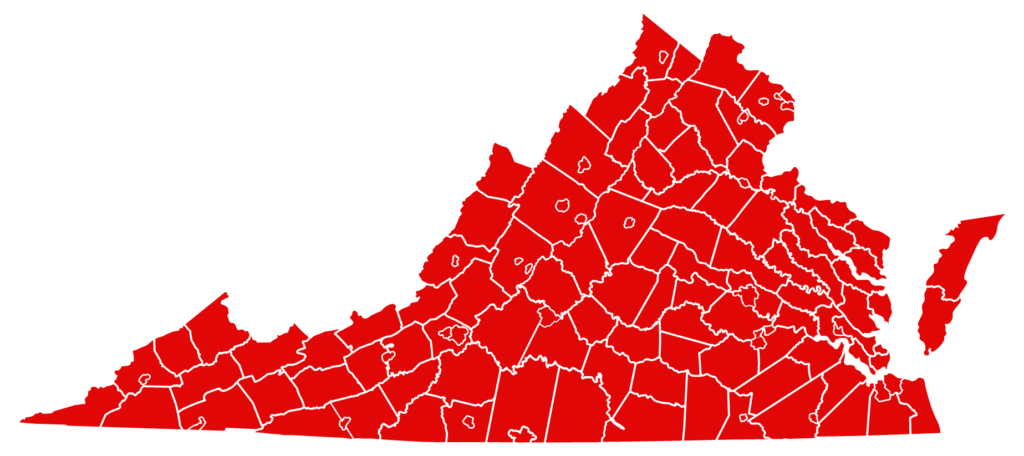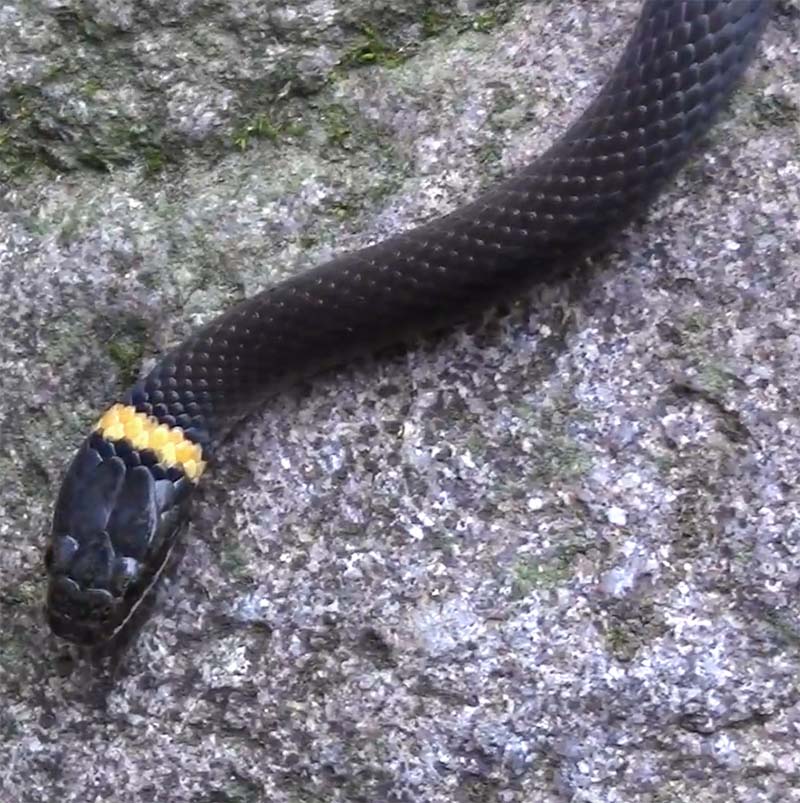
- Scientific Name
- Diadophis punctatus
- Range
- All of Virginia
- Also Known As
- Fodder Snake, Yellow Belly Ring Snake
- Venomous
- No
- Features
- Black Body With a White Collar Around the Neck
- Prey
- Earthworms, Salamanders, Lizards
- Litter Size
- 2 to 7 Eggs per Birth
- Life Span
- 20 Years
- Length
- 10 - 15 Inches
Quick Links for Ring-Necked Snake
Ring-Necked Snake Description
Ring-Necked Snake Appearance
Size
This snake is usually between 10 to 15 inches long.
The maximum length is about 19 inches long, however, the record length found was about 28 inches long. (Virginia’s record length is about 16).
Juveniles tend to be 3.5 to 5 inches long.
Ringnecked Snake Behavior
These snakes are thought to be rare here in Virginia, but they are very shy and secretive. Their small size and being nocturnal, makes the sightings even more rare. But here in Virginia they are classified as secure, and there are many of them here.
These snakes like to hide in brush and other yard debris, and love to be near the forest edge so that they can have a place to hide and a place to hunt.
Despite their rarity they are social animals and tend to hang out in groups of the same species.
These snakes rarely bite, and when they do there shouldn’t be any pain for you and rarely leave a mark.
It is against the law in Virginia to keep any wild snake as a pet.
Range and Habitat
Range
These snakes can be found found everywhere in Virginia. These snakes can be found as far north as Canada and Wisconsin, and as far south as Tennessee.
Habitat
These snakes love moist woodlands, but it will also be found on the edges of wetlands, and the open areas of mountains and hilly areas. This snake also loves to be in moist humid basements.
Diet
These snakes prefer to eat Earthworms, Salamanders, Lizards, and insects. It’s favorite food is the red-backed salamander.
Northern vs Southern Ringed Snake
The Northern and Southern Ringed Snake differences are very small. So small, there are no changes in diet, size, habitat, mating habits, etc. The only difference is where in Virginia they are, and how they look.
Differences in Appearance
The Northern Ringsnake’s ring on their neck will be a solid unbroken line, they will also have a single or 2 lines of dots on their bellies.
The Southern Ringsnake’s ring on their neck will be broken with a gap in the middle as shown in the image. They will also have multiple lines of dots on their bellies.
Besides these 2 things, there is not much difference in appearance between these 2 snakes.
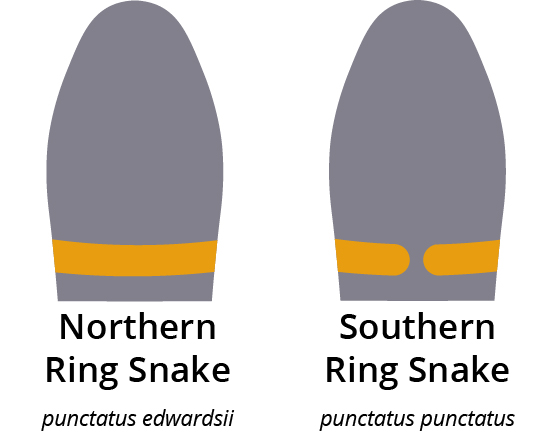
Differences in Range
These snakes are everywhere in Virginia, however, the Southern Ringneck’s range is Southeastern Virginia, while the Northern Ringneck can be found in the mountains to the west and north. However, both can be found in central Virginia, and sometimes interbreeding occurs, making their appearance a little different from the two.
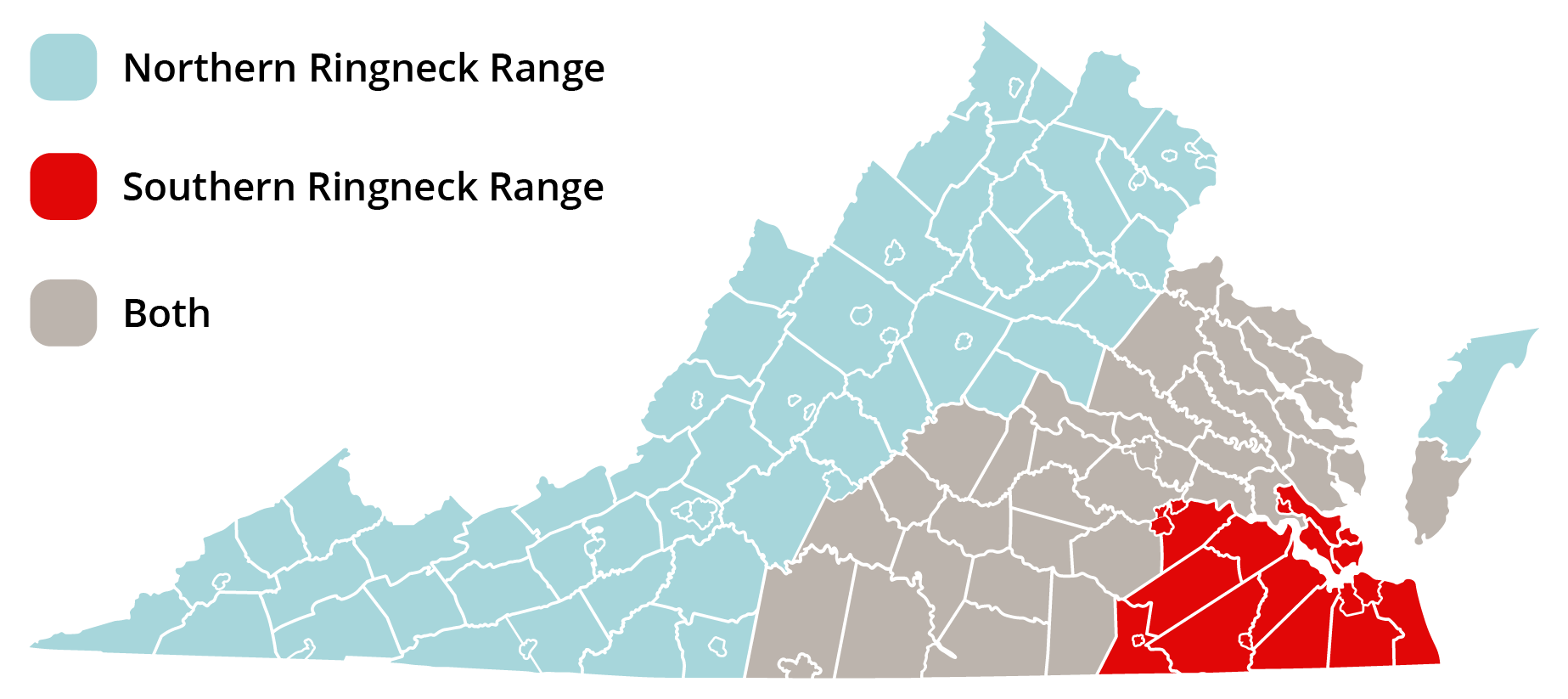
Reproduction and Young
Reproduction
These snakes only breed one a year in the spring or fall. During the mating season, females release pheromones from their skin to attract males. When mating, the male will bite the female around the neck ring
Eggs and Young
Eggs are laid in June or early July in covered moist locations, and will hatch in August and September.
